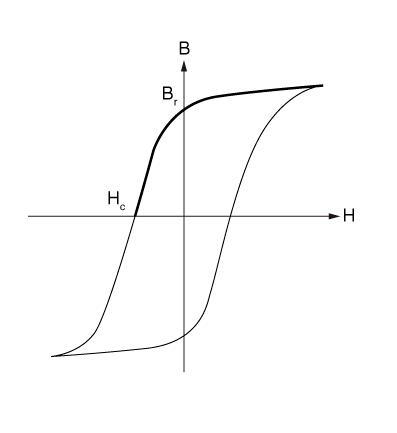Linear Magnetic Behavior
Linear magnetic behavior is defined by direct specification of magnetic permeability.
Directional Dependence of Magnetic Permeability
Isotropic, orthotropic, or fully anisotropic magnetic permeability can be defined. For non-isotropic magnetic permeability a local orientation for the material directions must be specified (Orientations).
Isotropic Magnetic Permeability
For isotropic magnetic permeability only one value of magnetic permeability is needed at each temperature and field variable value. Isotropic magnetic permeability is the default.
Orthotropic Magnetic Permeability
For orthotropic magnetic permeability three values of magnetic permeability (, , ) are needed at each temperature and field variable value.
Anisotropic Magnetic Permeability
For fully anisotropic magnetic permeability six values (, , , , , ) are needed at each temperature and field variable value.
Frequency-Dependent Magnetic Permeability
Magnetic permeability can be defined as a function of frequency in a time-harmonic eddy current analysis.

